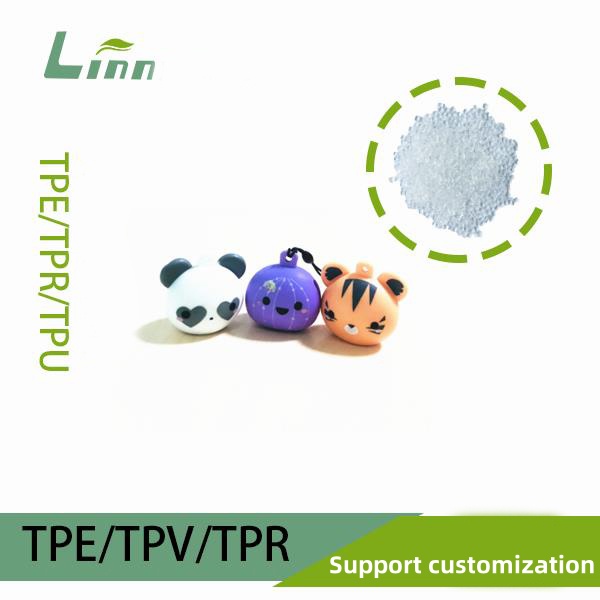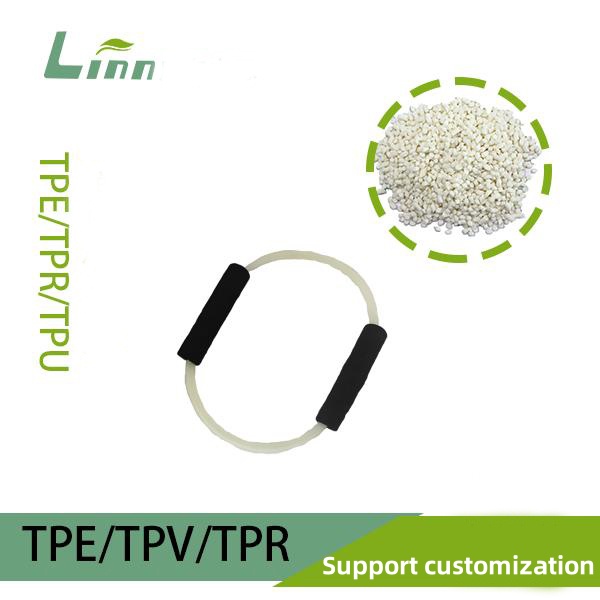As someone who has been in the rubber and plastics industry for years, I know firsthand how tricky TPR (Thermoplastic Rubber) materials can be during production. Among the many challenges, shrinkage is one that often gives engineers and manufacturers a real headache. Issues like products not meeting size specifications, repeated mold adjustments, or even customer complaints can all stem from shrinkage. Today, I want to share my experience and industry insights on the causes of TPR shrinkage, practical solutions, and some handy tips to help those grappling with this issue.

Why Does TPR Material Shrink?
TPR is a versatile material that combines the elasticity of rubber with the processability of plastics, making it a go-to choice for shoe soles, toys, seals, and more. Shrinkage, in simple terms, happens when the molded part cools and ends up smaller than intended. Sounds straightforward, but the reasons behind it can be quite complex. Here are the main culprits I’ve come across:
Material Properties
The molecular structure of TPR causes it to expand and contract during heating and cooling. When fillers like calcium carbonate are used in high proportions, crystallinity and shrinkage rates are affected. According to the ASTM D955 standard, shrinkage rates for different TPR formulations typically range from 0.5% to 3%, but this varies by recipe.
Poor Mold Design
The mold is critical to TPR molding. If it doesn’t account for the material’s shrinkage rate or has uneven cooling, localized shrinkage can occur. For instance, inconsistent wall thickness can lead to varying cooling rates, causing dimensional inaccuracies.
Improper Processing Parameters
Injection molding parameters like temperature, pressure, and cooling time directly impact TPR’s final form. Excessively high temperatures can degrade the material, while insufficient cooling time may result in parts being ejected before they’re fully set, leading to shrinkage.
Environmental and Post-Processing Factors
Post-molding, parts exposed to high temperatures or humidity may undergo secondary shrinkage. Improper post-processing, such as inadequate annealing, can also exacerbate the issue.
Understanding these causes is the first step to tackling shrinkage. Below, I’ll dive into solutions from four angles: material selection, mold optimization, process adjustments, and post-processing.
How to Effectively Address TPR Material Shrinkage?
1. Start with Material Selection: Find the Right Formula
TPR formulations vary widely, with different bases (like SBS or SEBS) and filler ratios affecting shrinkage. A few years ago, I helped a shoe sole manufacturer tackle shrinkage in their TPR soles. Their material had a high filler content, resulting in a shrinkage rate of 2.8%. Switching to a lower-filler formula significantly improved the outcome.
Practical Tips:
Choose Low-Shrinkage Formulas: Work with your supplier to select TPR with lower shrinkage rates, such as SEBS-based formulas, which are typically more stable than SBS-based ones.
Reduce Filler Content: High filler levels (e.g., calcium carbonate) increase shrinkage. Aim for a filler ratio of 20%-30%.
Test Material Properties: Before mass production, test the material’s Melt Flow Index (MFI) and shrinkage rate in a lab to ensure it meets requirements.
For guidance, refer to the ISO 294-4 standard, which outlines shrinkage testing methods for thermoplastics.

2. Optimize Mold Design to Minimize Shrinkage
The mold is the “heart” of TPR molding, and a well-designed mold can prevent shrinkage from the outset. I once worked on a medical device project where the client required dimensional tolerances within ±0.05mm. By tweaking the mold’s cooling system and gate placement, we reduced the shrinkage rate from 1.5% to 0.8%.
Mold Optimization Tips:
Account for Shrinkage Allowance: Factor in the material’s shrinkage rate during mold design by scaling up dimensions. For a 2% shrinkage rate, increase mold dimensions by 2%.
Ensure Uniform Wall Thickness: Avoid significant wall thickness variations, keeping changes within ±20% to promote even cooling.
Improve Cooling System: Add cooling channels to maintain uniform mold temperatures (typically 20-40°C).
Optimize Gate Placement: Use side or pinpoint gates to prevent uneven material flow caused by poor gate positioning.
Here’s a quick reference table for mold design parameters:
|
Parameter |
Recommended Value |
Notes |
|---|---|---|
|
Mold Temperature |
20-40°C |
Ensures uniform cooling, reduces stress |
|
Wall Thickness |
1.5-4mm |
Avoids uneven shrinkage from thick/thin walls |
|
Shrinkage Allowance |
0.5%-3% |
Adjust based on material test data |
|
Cooling Time |
10-30 seconds |
Depends on part size and thickness |
3. Fine-Tune Processing Parameters for Precision
Processing parameters are like the “conductor” of TPR molding—small missteps can lead to shrinkage. I recall a case where a client’s parts had localized shrinkage due to insufficient holding time, which prevented complete mold filling.
Process Adjustment Tips:
Optimize Injection Temperature: Keep barrel temperatures between 180-220°C and mold temperatures at 20-40°C to avoid overheating or rapid cooling.
Extend Holding Time: Set holding time to 5-10 seconds to ensure complete mold filling and minimize shrinkage.
Control Cooling Time: Short cooling times can lead to premature ejection. Extend cooling to 10-30 seconds based on part thickness.
Adjust Injection Pressure: Low pressure can cause underfilling. Maintain 80-120MPa, adjusting for equipment and material.
Here’s a TPR injection molding parameter reference table:
|
Process Parameter |
Recommended Range |
Notes |
|---|---|---|
|
Barrel Temperature |
180-220°C |
Avoid degradation from overheating |
|
Mold Temperature |
20-40°C |
Ensures uniform cooling |
|
Injection Pressure |
80-120MPa |
Adjust based on mold and part |
|
Holding Time |
5-10 seconds |
Ensures complete filling |
|
Cooling Time |
10-30 seconds |
Depends on part thickness |
4. Enhance Post-Processing to Lock in Results
Molded parts aren’t “done” once they leave the mold—post-processing is crucial. For high-precision parts, neglecting this step can lead to shrinkage issues surfacing later.
Post-Processing Tips:
Annealing: Place molded parts in a 50-60°C environment for 2-4 hours to relieve internal stresses and reduce secondary shrinkage.
Control Storage Conditions: Avoid exposing parts to high heat or humidity. Store at 15-25°C with humidity below 60%.
Dimensional Inspection: Use high-precision tools like coordinate measuring machines to verify parts meet tolerance requirements.

Case Study: A Real-World Shrinkage Solution
To make this more tangible, let me share a real case. Last year, a toy manufacturer reached out because their TPR toy handles kept shrinking, causing assembly issues. They had already tried multiple mold revisions with little success.
My Approach:
Material Analysis: Testing revealed their TPR had a 40% filler content, leading to a high shrinkage rate. I recommended switching to a 25% filler formula, and tests confirmed a new shrinkage rate of 1.2%.
Mold Optimization: The mold’s cooling channels were unevenly distributed, causing slow cooling in thicker areas. I redesigned the channel layout and lowered the mold temperature to 30°C.
Process Adjustments: Reduced injection temperature from 230°C to 200°C, extended holding time from 4 to 8 seconds, and increased cooling time from 15 to 25 seconds.
Post-Processing: Implemented a 2-hour annealing process and stored parts in a temperature- and humidity-controlled warehouse.
The result? Shrinkage dropped from 2.5% to 0.9%, and the parts met all dimensional requirements. This experience underscored that solving shrinkage requires a holistic approach—material, mold, process, and post-processing must all align.
Long-Term Strategies to Prevent Shrinkage
Beyond immediate fixes, here are some long-term strategies to prevent shrinkage issues and minimize risks from the start:
Build Strong Supplier Relationships: Partner with reliable TPR suppliers to ensure consistent material performance.
Standardize Processes: Create detailed injection molding guidelines and train operators regularly to maintain parameter consistency.
Maintain Molds Regularly: Inspect cooling systems and gates every 3-6 months to address wear or blockages.
Leverage Digital Tools: Use mold flow analysis software (e.g., Moldflow) to simulate material flow and shrinkage, optimizing mold design.

FAQs: Addressing Common Concerns
To round things out, here are answers to some frequently asked questions about TPR shrinkage:
Q1: How do I accurately measure TPR shrinkage?
A: Follow ASTM D955 or ISO 294-4 standards. Create standard test specimens, cool them for 24 hours, and measure dimensional changes. Test at least three samples and average the results.
Q2: What if shrinkage only occurs in specific areas?
A: Localized shrinkage often stems from uneven cooling or wall thickness variations. Check the mold’s cooling channels for uniformity and adjust the design to ensure consistent wall thickness. Extending holding time can also help with underfilling.
Q3: Do I need to redesign the mold if I change materials?
A: Not always. If the new material’s shrinkage rate is close to the original (e.g., ±0.5%), process tweaks may suffice. For larger differences (e.g., over 1%), recalculate the mold’s shrinkage allowance.
Q4: Does annealing affect TPR performance?
A: Proper annealing (50-60°C for 2-4 hours) won’t significantly impact TPR’s elasticity or strength. It reduces internal stress and shrinkage. However, excessive heat or duration can cause aging, so control conditions carefully.
Final Thoughts
The shrinkage of TPR materials can be a tough nut to crack, but it’s far from insurmountable. By selecting the right material, optimizing mold design, fine-tuning processes, and strengthening post-processing, you can keep shrinkage under control. As an industry veteran, I know that every solution comes from trial, error, and persistence. I hope this article offers you practical ideas and strategies to tackle shrinkage with confidence.
If you have more questions about TPR or shrinkage, feel free to reach out! Solving these challenges is all part of the journey to mastering our craft.





